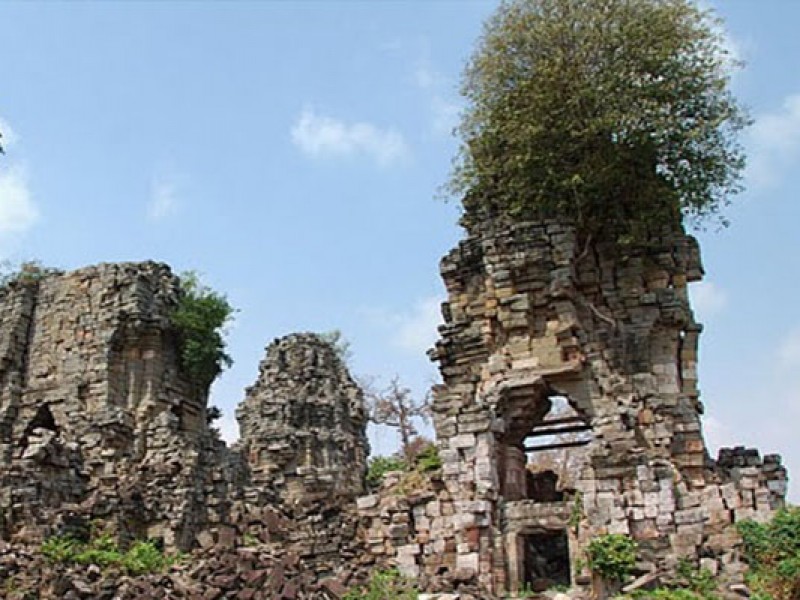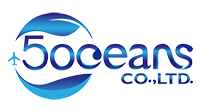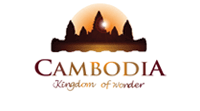
Cambodia is located in Southeast Asia in the Southern part of Indochina. It is easily accessible from within the region and worldwide. Among the 10 countries of ASEAN, Cambodia with a land area of 181,035 square kilometres. The population is more 15 million.
Cambodia lies between 10 and 15 degrees latitude north and between 102 and 107 degrees longtitude east making it a tropical, warm and humid country. The year-round warm climate and seasonal monsoon rains ensure lush growth and development.
The land mass is almost square with the central point being Kampong Thom province set in a deep plain surrounded by mountains and plateaus to the North, East and West. The capital Phnom Penh is located on the plain. To the South, the 440kms of coastal waters are rich in tropical fish, pristine white sand beaches, beautiful uninhabited islands and clear air.
Cambodia’s 2600 km border touches Laos to the North, Vietnam to the East and Southeast, Thailand to the West and the Gulf of Thailand to the South. The Kingdom of Cambodia has cooperative political agreements with its neighbors. This plus the geography makes traveling within Cambodia and beyond easy as well, Cambodia escapes the worst of the storms, earthquakes and volcanic activity that can occur in Southeast Asia.
| January 01 | International New Year Day |
| January 07 | Victory Day over Genocide |
| January 31 | Meak Bochea day |
| March 08 | International Women’s Day |
| April 14-15-16 | Khmer’s New Year Day |
| April 29 | Visak Bochea Day |
| May 01 | International Labor Day |
| May 13-14-15 | King Norodom Sihamoni’s Birthday |
| June 01 | Internation National Children Day |
| June 18 | Queen Norodom Monineath Sihanok’s Birthday. |
| September 24 | Constitutional Day |
| October 08-09-10 | Pchum Ben Day |
| October 15 | Mourning Ceremony of His Majesty Norodom Sihanouk |
| October 23 | Anniversary of Paris Peace Agreements |
| October 29 | Coronation Day of King Norodom Sihamoni |
| November 09 | Independence Day |
| November 21-22-23 | Water Festival |
| December 10 | International Human Right Day. |
Phnom Penh International Airport is the largest airport in Cambodia. Its former name was Pochentong International Airport. It is located 10 kilometers west of Phnom Penh, the nation’s capital.
This airport is the main gateway into Cambodia. It links with domestic terminal facility, offers domestic Cambodia Angkor Air flights to Siem Reap and Sihanoukville.
Phnom Penh International Airport also connects with many major regional hubs such as Bangkok, Beijing, Doha, Guangzhou, Hanoi, Ho Chi Minh, Hong Kong, Kuala Lumpur, Kunming, Nanning, Seoul, Shanghai, Singapore, Taipei, Vientiane and Yangon. 20 Airlines are serving in Phnom Penh International Airport with 20 destinations.
Siem Reap International Airport
Siem Reap International Airport is the second airport in Cambodia. It is located 6 kilometers away, but it is easy to find a taxi or a tuk-tuk to downtown. The airport’s new terminal was inaugurated on August 28, 2006.
This airport makes a connection with other 2 airports, Phnom Penh and Sihanoukville, by national carrier Cambodia Angkor Air for domestic routes.
It connects with regional hubs such as Bangkok, Beijing, Danang, Guangzhou, Hanoi, Ho Chi Minh, Kuala Lumpur , Kunming, Luang Prabang, Manila, Pakse, Seoul, Shanghai, Singapore, Yangon. 17 Airlines are serving in Siem Reap International Airport with 20 destinations.
Sihanoukville International Airport
Sihanoukville International Airport is Cambodia’s third airport, located 18 kilometers east of the town. Its former name was Kang Keng Airport. It recently reopened in December 2011 and categorized as an international airport but only offers domestic commercial services.
On December 14, 2011, the only one airline, Cambodia Angkor Air is operating for this airport with tri-weekly service from Siem Reap International Airport. Then the service was further adjusted to continue Phnom Penh as well operating a triangle route: Siem Reap – Sihanoukville – Phnom Penh – Siem Reap from the beginning of March 31, 2013.
Taxis, tuk-tuk, and Motorbike taxis are in the services between the airport and the beach town.
Khmer or Cambodian is an official language of Cambodia. Khmer has been considerably influenced by Sanskrit and Pali. It consists of 33 consonants, 23 vowels and 12 independent vowels.
English is widely spoken and understood. French and Chinese are also spoken frequently in the country. Most elderly Cambodians speak French and many people in the Khmer-Chinese population speak Chinese – Teochew, Cantonese, and Mandarin.
Cambodia has a tropical climate that is warm and humid. In the monsoon season, abundant rain allows for the cultivation of a wide variety of crops and this year round tropical climate makes Cambodia ideal for the tourism industry. Visitors do need not fear natural disasters such as erupting volcanoes or earthquakes and the country is not directly affected by tropical storms.
Cambodia can be visited throughout the year. However those planning to travel extensively by road should avoid the last two months of the rainy season when some countryside roads may be impassable.
The climate can generally be described as tropical. As the country is affected by monsoon, it is hot and humid with an overage temperature around 27.C (80.F) but in the dry season it is cool and very much like a European summer.
There are two distinct seasons: the Rainy Season and the Dry Season. However, the Dry Season is divided into two sub-seasons, cool and hot and these seasons are:
The Rainy season:
From June till October 27-35.C (80-95.f)
The Dry season (cool):
From November till February 17-27.C (80-95.F)
The Dry season (Hot) :
From March till May 29-38.C (84-100.F)
Time zone:
GMT+7 hours
Weather
The country has a tropical climate-warm and humid. In the monsoon season, abundant rain allows for the cultivation of a wide variety of crops. This year-round tropical climate makes Cambodia ideal for developing tourism. Travelers need not fear natural disasters such as erupting volcanoes or earthquakes, and the country is not directly affected by tropical storms. Please click here for Weather in Cambodia.
Across the land of green rice paddies, shining blue waters, great wandering rivers and lush forests, the people of Cambodia are re-learning the arts of their ancestors.
Silk Weaving
Gem-coloured silk in a brilliant array of colours are stacked floor to ceiling in shops at Phnom Penh and Siem Reap. This Cambodian handicraft has been passed down from generation to generation. You can visit silk weavers in various places in Cambodia including Kandal, Prey Veng and Takeo provinces. The colours of traditional Khmer silk costumes are historically associated with the days of the week as follows:
Yellow for Monday, Purple for Tuesday, Green and Copper on Wednesday, Green for Thursday, Blue on Friday, Violet for Saturday and Red for Sunday.
Silver
The art of the Silversmith reached its height in Cambodia during the 11th century when crafted objects were used primarily by Royalty and the upper classes for ceremonial purposes including funerals and religious rituals. You will find city market stalls offering many silver items for sale including intricate fruit and animal designs as well as traditional style pieces.
Carvings
Wood carvings reflect strong spiritual beliefs with roots in animism from the pillars of a house to the elaborate motifs of the moon, stars, fruit and flowers. Houses are built with great attention given to the pillars, each having its own spirit of a woman, and roofs feature elaborate carved motifs. Miniature Spirit Houses are strategically placed at homes and other buildings and they are used for offerings of food, flowers and incense. Carved boxes and statues are used for ornamentation and furniture.
Stone carving is another popular art form and again you will find many vendors in the main tourist markets offering pieces for sale. There is an excellent array of reproduction pieces available.
Traditional arts and crafts are abundant in Cambodia. Scuptures., paintings and curving done with great care and attention. One can view such antiquities in market place, shop or museum. The variety of arts and crafts are large in range and include such item as: silver and gold jewellery, wicker were furniture, fine hard wood furniture, silks, marble sculptures, high quality China, leather ware and much more. There is a sharp eye for detail here and much of the products will be intricately carved especially the furniture, sculptures etc.
Unfortunately, much of these works completely ceased to exist during the Khmer Rouge dictatorship. Artisans ware instead forced to work in labour camps, where most of them died painful deaths. Many arts and crafts also purposely perished during that time.
Today there has been a revival, due to a great deal of restoration work, which has been initiated by the Royal governments of the Kingdom of Cambodia. Now many centers have been established to keep the ancient methods of the craftwork alive. You can see examples of this throughout the country.
Thearavada Buddhism is the official religion in Cambodia which is practiced by 95 percent of the population– just like that of Thailand, Burma, Sri Lanka. However, Christianity and Cham Muslim are being active and popular among a large number of population as well in the capital and provinces, showing a sign of growth. Daoism and Confuism are also commonly practiced among the Chinese people.
Buddhist monks are highly disciplined and must follow 227 rules in addition to the ten basic precepts of being a good Buddhist.
Monks cannot take part in entertainment. They lead simple lives dedicated to Buddhism and the temple.
Buddhists see the universe and all life as part of a cycle of eternal change. They follow the teaching of Buddha, an Indian prince born in the sixth century B.C. Buddhists believe that a person is continually reborn, in human or nonhuman form, depending on his or her actions in a previous life. They are released from this cycle only when thy reach nirvana, which may be attained by achieving good karma through earning merit and following the Buddhist path of correct living.
Earning merit is an important of Buddhist life. Buddhists in Cambodia earn merit by giving money, goods, and labor to the temples, or by providing one of the two daily meals of the monks. Children often look after the fruits trees and vegetable gardens inside their local wat, or temple. Boys can earn merit by becoming temple servants or novice monks for a short time. Most young men remain monks for less than a year.
Cambodia has a land area of 181,035 square kilometers in the southwestern part of the Indochina peninsula, about 20 percent of which is used for agriculture. It lies completely within the tropics with its southern most points slightly more than 10° above the Equator. The country capital city is Phnom Penh.
International borders are shared with Thailand and the Lao People’s Democratic Republic on the West and the North, and the Social Republic of Viet Nam on the East and the Southeast. The country is bounded on the Southeast by the Gulf of Thailand. In comparison with neighbors, Cambodia is a geographical contact country administratively composed of 20 provinces, three of which have relatively short maritime boundaries, 2 municipalities, 172 districts, and 1,547 communes. The country has a coastline of 435 km and extensive mangrove stands, some of which are relatively undisturbed.
The dominant features of the Cambodian landscape are the large, almost generally located, Tonle Sap (Great Lake) and the Bassac River Systems and the Mekong River, which crosses the country from North to South. Surrounding the Central Plains which covered three quarters of the country’s area are the more densely forested and sparsely populated highlands, comprising: the Elephant Mountains and Cardamom Mountain of the southwest and western regions; the Dangrek Mountains of the North adjoining of the Korat Plateau of Thailand; and Rattanakiri Plateau and Chhlong highlands on the east merging with the Central Highlands of Viet Nam.
The Tonle Sap Basin-Mekong Lowlands region consists mainly of plains with elevations generally of less than 100 meters. As the elevation increases, the terrain becomes more rolling and dissected. The Cardamom Mountains in the southwest rise to more than 1,500 meters and is oriented generally in a northwest-southeast direction. The highest mountain in Cambodia –Phnom Aural, at 1.771meters – is in the eastern part of this range.
The Elephant Range, an extension of Cardamom Mountains, runs towards the south and the southeast and rises to elevations of between 500 and 1,000 meters. These two range are bordered on the west are narrow coastal plain facing the gulf of Thailand that contains Kampong Som Bay. The Dangrek Mountains at the northern rim of Tonle Sap Basin, consisting of a steep escarpment on the southern edge of the Korat Plateau in Thailand, marks the boundary between Thailand and Cambodia. The average elevation of about 500 meters with the highest points reaching more than 700 meters. Between the northern part of the Cardamom ranges and the western part of the Dangrek, lies and extension of the Tonle Sap Basin that merges into the plains in Thailand, allowing easy accesses from the border of Bangkok.
The Mekong River Cambodia’s largest river, dominates the hydrology of the country. The river originates in mainland China, flows through Myanmar, Laos, Thailand before entering Cambodia. At Phnom Penh, with alternative arms, the Bassak River from the south, and the Tonle Sap River linking with the ” Great Lake ” itself –Tonle Sap – form northwest. It continues further southeastward to its lower delta in Viet Nam and to the South China Sea.
The section of Mekong River passing through Cambodia lies within the topical wet and dry zone. It has a pronounced dry season during the Northern Hemisphere winter, with about 80 percent of the annual rainfall occurring during the southwest monsoon in May-October. The Mekong River average annual flow at Kratié of 441 km3 is estimated as 93 percent of the total Mekong run-off discharge into the sea. The discharge at Kratié ranges from a minimum of 1,250m3/s to the maximum 66,700m3/s.
The role of Tonle Sap as a buffer of the Mekong River system floods and the source of beneficial dry season flows warrants explanation. The Mekong River swells with waters during the monsoon reaching a flood discharge of 40,000m3/s at Phnom Penh. By about mid-June, the flow of Mekong and the Bassak River fed by monsoon rains increases to a point where its outlets through the delta cannot handle the enormous volume of water, flooding extensive adjacent floodplains for 4-7 months. At this point, instead of overflowing its backs, its floodwaters reserve the flow of the Tonle Sap River (about 120 km in length), which then has the maximum inflow rate of 1.8m/s and enters the Grate Lake, the largest natural lake in Southeast Asia, increasing the size of the lake from about 2,600 km2 to 10,00 km2 and exceptionally to 13,000 km2 and raising the water level by and average 7m at the height of the flooding. This specificity of the Tonle Sap makes it the only “river with return ” in the world.
After the Mekong’s water crest (when its downstream channels can handle the volume of water), the flow reverses and water flows out of the engorged lake. The Great Lake then acts as a natural flood retention basin. When the floods subside, water starts flowing out of the Great Lake, reaching a maximum outflow rate of 2.0m/s and, over the dry season, increase mainstream flows by about 16 percent, thus helping to reduce salinity intrusion in the lower Mekong Delta in Vietnam. By the time the lake water level drops to its minimum surface size, a band 20-30 km wide of inundate forest is left dry with deposits of a new layer of sediment. This forest, which is of great significance for fish, is now greatly reduced in size through salvation and deforestation. The area flood around Phnom Penh and down to the Vietnamese border is about 7,000 km2.
The Ministry of Foreign Affairs and International Cooperation has launched e-visa(http://evisa.mfaic.gov.kh), which enables you to apply for a Cambodia tourist visa online. Instead of applying through Cambodian Embassy, all you need to do is to complete the online application form and pay with your credit card. After receiving your Visa through email, print out and bring it along when you travel to Cambodia.
Visa can be obtained at the following points of entry:
Airports
– Phnom Penh International Airport
– Siem Reap International Airport
Cambodia-Vietnam border
– Bavet International Check Point
– Kha Orm Sam Nor International Check Point
Cambodia-Thailand border
– Cham Yeam International Check Point
– Poi Pet International Check Point
– OSmach International Check Point
Application for an entry visa requires:
– A completed visa application form
– Passport valid at least further 4 months
– One recent photograph (4×6)
– Appropriate visa fee
– Supporting documents for business and official visas
VISA FEES (Up on arrival)
– Tourist visa fee : USD 30 + USD 6 (processing charge)
– Business visa fee : USD 35 + USD 6 (processing charge)
Diplomatic, Official, Courtesy and Special (Cambodian national) visas are issued gratis.
Important: In order to be admitted into the country, tourists need sufficient funds for their stay and a return ticket.
VISA K
Visa K can be issued to a Cambodian national entering the Kingdom on a foreign passport. (The applicant has to provide well-documented evidence, such as proof that one?s parents were Cambodian).
VISA EXTENSION
The tourist (T) and business (E) visas can be extended at the Immigration Department, National Police. The Diplomatic (A), Official (B) and Courtesy (C) visas can be extended at the Consular Department, Ministry of Foreign Affairs.
Note
A tourist visa can be extended only once for up to one month (single entry). A business visa can be extended for:
– One month (Single entry)
– Three months (Single entry)
– Six months (Multiple entry)
– One year (Multiple entry)
Over stay will be fined USD 10 per day
| Embassy of Australia:
Villa 11, St. 254 Tel:213 470, Fax: 426 003 |
| Embassy of Brazil Darussalam:
Nº 237, St. 51 Tel: 211 457 – 458, Fax: 211 455 – 456 |
| Embassy of Bulgaria:
Nº 227, P. Norodom Blvd.Tel: 723 182/015 915 825, Fax: 426 491 |
| Embassy of Canada:
Villa 11, St. 254 Tel: 426 001-1, Fax: 426 271 |
| Embassy of Cuba:
Nº 98, St. 214. Skt. Veal Vong Tel: 217 428 |
| Embassy of France:
Nº 1, P. Monivong Blvd. Tel: 430 020, Fax: 430 037 |
| Embassy of Germany:
Nº 76-78, St. 214 Tel: 216 381/216 193, Fax: 427 746 |
| Embassy of India:
Nº 777, P. Monivong Blvd. Tel: 363 502 / 361 270, Fax: 364 489 |
| Embassy of Indonesia: Villa 179,Pasteur St. Tel: 217 947/217 934/216 623, Fax: 216 129 |
| Embassy of Japan: Nº 75, P. Norodom Blvd. Tel: 217 161/217 164, Fax: 216 162 |
| Embassy of Laos: Nº 15-17, Mao Tse Toung Blvd. Tel: 426 441, Fax: 427 454 |
| Embassy of Malaysia: Villa Nº 11. St. 254 Tel: 216 411/017 810 777, Fax: 216 004 |
| Embassy of Poland: Nº 767, P. Monivong Blvd. Tel: 720 917/720 916, Fax: 720 918 |
| Embassy of Royal Thai: Nº 4, P. Monivong Blvd. Tel: 363 869/363 870/363 871, Fax: 018 810 860 |
| Embassy of Russia: Nº 213, P. Sothearos Blvd. Tel: 210 931/215 082 |
| Embassy of Singapore: Nº 92, P. Norodom Blvd. Tel: 360 855/360 856, Fax: 018 810 840 |
| Embassy of Sovereign Military Order of Malta: Nº 15, Sokun Meanbon St. Tel: 725 055 – 908, Fax: 724 855 |
| Embassy of the Democratic People’s Republic of Korea: Nº 39, P. Suramarith St. Tel: 426 848/015 839 680 |
| Embassy of the People’s Republic of China: Nº 256, Mao Tse Toung Blvd. Tel: 720 920/720 921, Fax: 210 861 |
| Embassy of the Socialist Republic of Vietnam: Nº 436, P. Monivong Blvd. Tel: 362 531, Fax: 427 385 |
| Embassy of the United Kingdom: Nº 29, St. 75 Tel: 012 802 992/012 802 993, Fax: 427 125 |
| Embassy of the United State of America: Nº 18, St. 228 Tel: 216 436/216 438/216 804, Fax: 216437 |
Drink lots of water. Never drink tap water purified, bottled water is available everywhere.
Use an insect repellent against mosquitoes. It is the only way to be sure of protection against mosquito borne diseases. Since Cambodia has a hot and humid tropical climate, casual and light-weight clothing is best. Clothing made from natural fibers is the best option. A jacket might be needed on cool winter evenings or in hotels and restaurants using excessive air-conditioning. A hat and high-factor sun block is advisable as protection against the hot sun when sightseeing.
When visiting temples or pagodas, including those of Angkor Wat, shorts and T-shirts are acceptable. Shoes are generally removed at the entrance to pagodas. For visits to the Silver Pagoda, which is within the Royal Palace grounds, visitors are asked to dress more formally. Gentlemen are required to wear long trousers and ladies should wear long trousers or long skirts.
Standard film, (such as Kodak, FUJI or Konica 100, ), slide and digital camera memory are widely available. Photos are inexpensive to process in the country. Any specialized photo equipment should be brought with you. Photography in airports, railway stations and near any military installations is forbidden and discretion should be used when photographing people, particularly monks. The cheapest & best quality photo service in Phnom Penh is SPK Photo Studio FUJI Shop at Monivong Blvd.
HEALTH REQUIREMENTS
Although no vaccinations are officially required for entry to Cambodia, they are highly encouraged. Visitors are advised to check with their doctor or a travel immunization clinic regarding protection against malaria, typhoid, tetanus, hepatitis A and B. Any essential medications should be brought with you as there is no guarantee they will be available in Cambodia.
Phnom Penh, Siem Reap, and Sihanouk Ville are three special places for connoisseurs of Khmer food.
Rice and fish, together with array of herbs, sauces and spices, are the Khmer typical cuisine. Curries and soup with beef, pork, poultry and seafood can be bought from vendors along the streets.
Cuisine from all over the world is also found in Cambodia with over 100 restaurants such as European, American, Mexican, Indian, Chinese, Japanese, Thai, Korean, Vietnamese and many others so visitors will be able to have many choices here.
Local cuisine
So many dishes are available and if you are eating at a roadside cafe then you can even make up your own dish. Vegetarians may find a problem with local meals but there is no need to worry as many places have very good menu’s with Vegetarians in mind. Here is a sample selection of local food:
Bacon with sauce. Beef soup. Chicken soup or fowl soup. Beef steak. Beef grill or roast beef. Barbecue pork. Boiled chicken. Braise. Cheese fish with meat. Chilli. Chops. Chowder. Cream cheese. Curry. Curry chicken with potatoes. Chafing dish. Clay-made pot soup. Fish pudding with vegetables. Fried beefs with onion. Fried fish. Fried eggs with onion and mushroom. Fried meat with vegetables. Fried mince-fish with spices. Goat soup. Goulash. Hash. Pork sour soup. Roast pig. Roast chicken. Roast chicken with gravy. Roast duck with gravy. Roast pork with gravy. Roast fish. Salad of meat and vegetables. Stew.
Khmer fruits are rich in all types of vitamins and there is an amazing verity of apples, bananas, coconuts, custard apples, durians, grapes, guavas, hog plums, jackfruits, jujubes, lychees, longans, mangoes, mangosteens, marrows, melons, milk fruits, oranges, palm fruits, papayas, persimmons, pineapples, pomegranates, pomeloes, rambutans, rose apples, sapodillas, tamarinds, tangerines, watermelons plus others that will be found on you travels and they are available all year round at the many markets found in Cambodia.
Local beer
There are many brands available in Cambodia but the most popular ones are Angkor Beer, Anchor Beer, ABC Beer (Stout), Tiger Beer, and Henniken Beer.

Phnom Penh Morning Tours
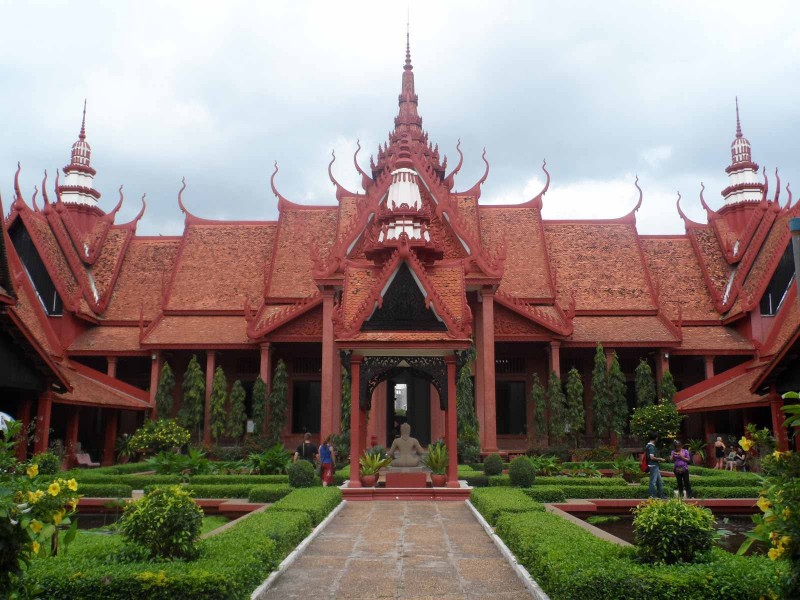
Phnom Penh Afternoon Tour
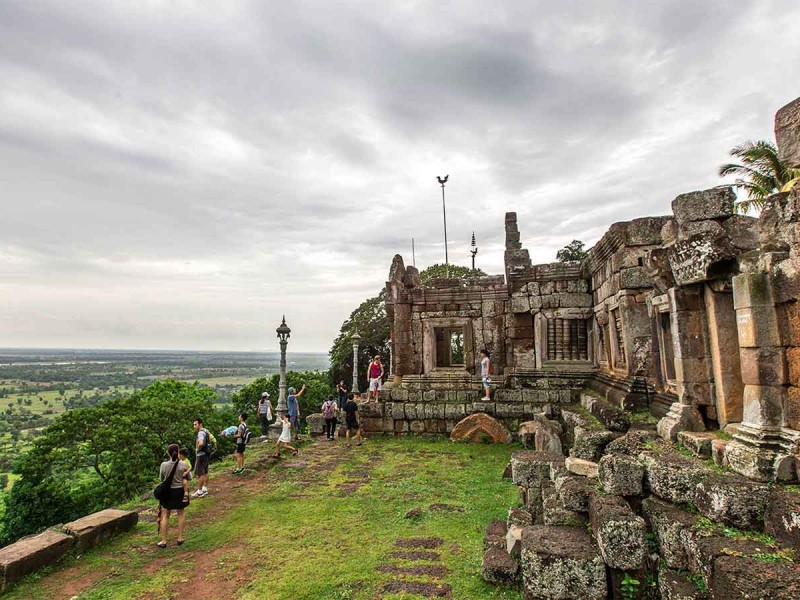
Phnom Chiso & Tonle Bati
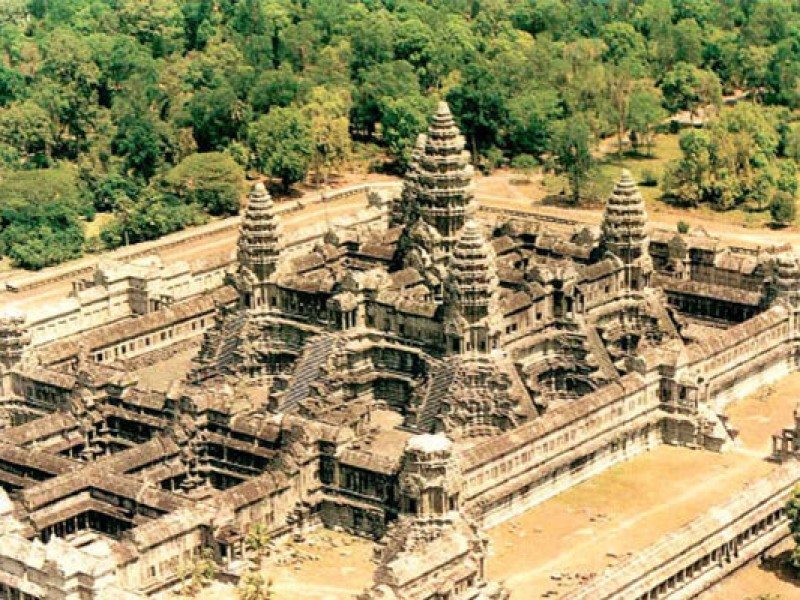
Siem Reap Angkor Wat
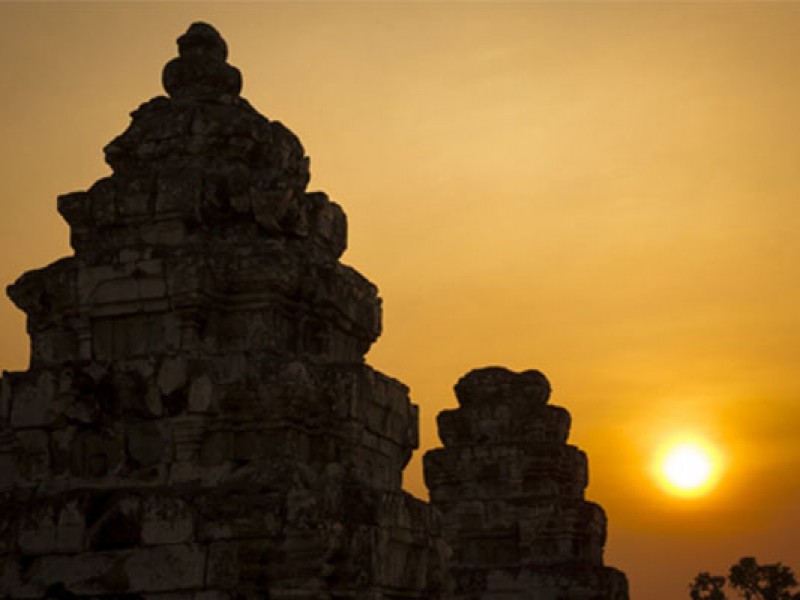
Siem Reap – Angkor Wat

Siem Reap – Angkor Wat
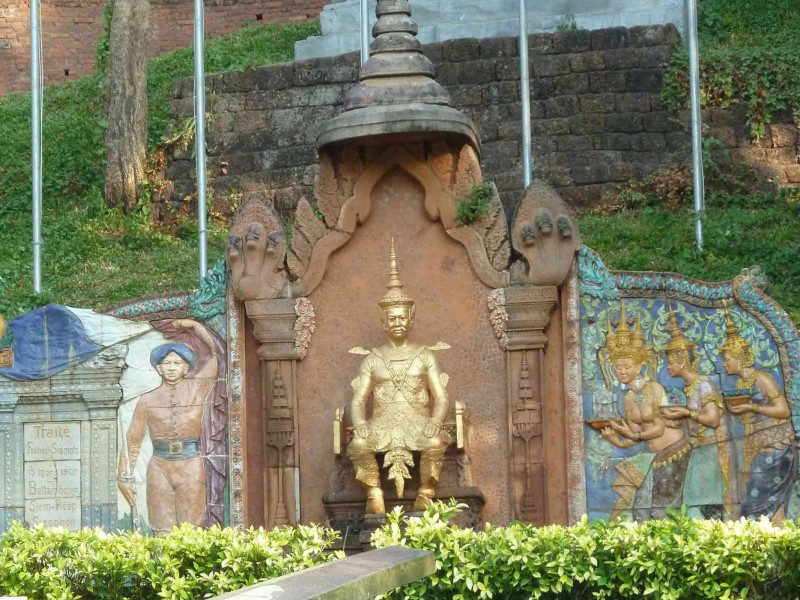
5D 4N in Cambodia
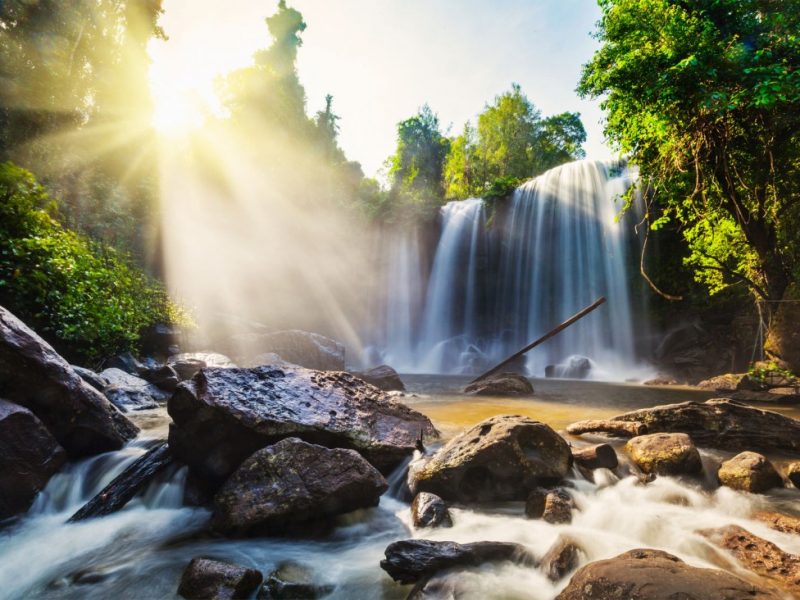
5D 4N in Cambodia
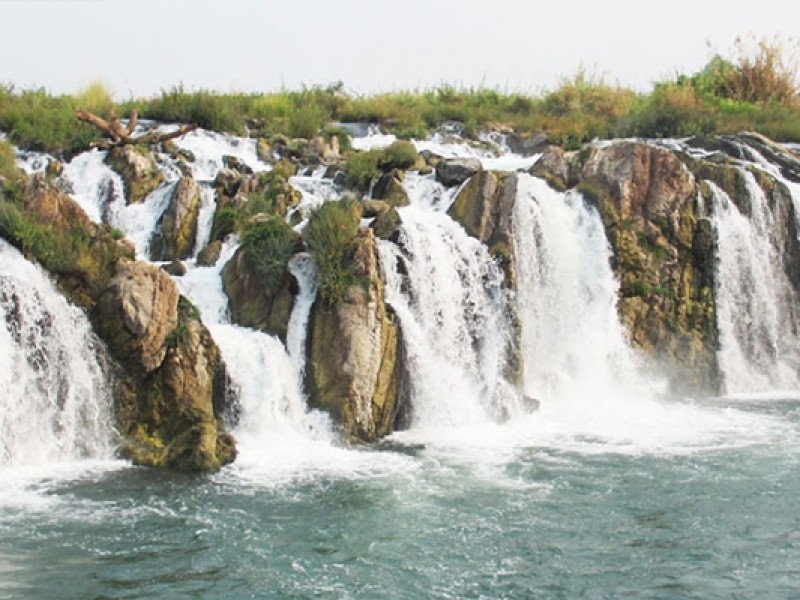
6D 5N In Preah Rumkel
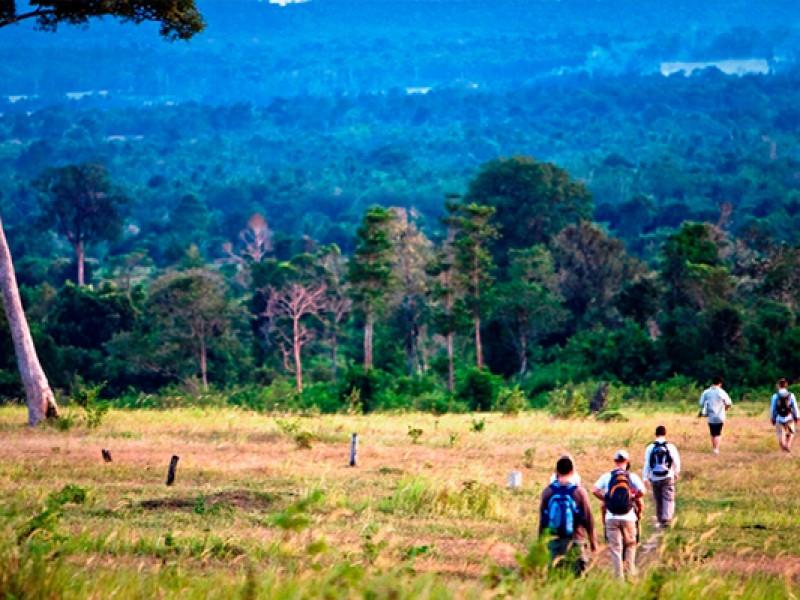
7D 6N In Chi Phat
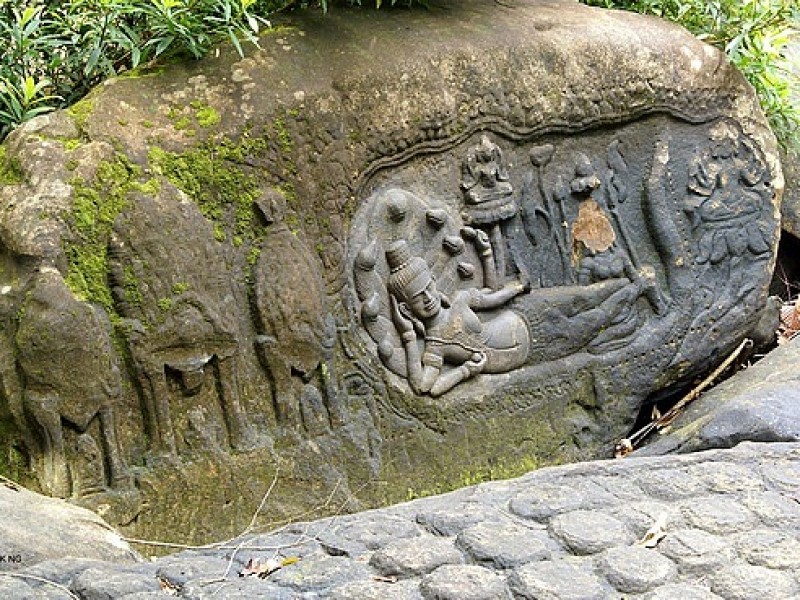
Kbal Spean Morning Tours
